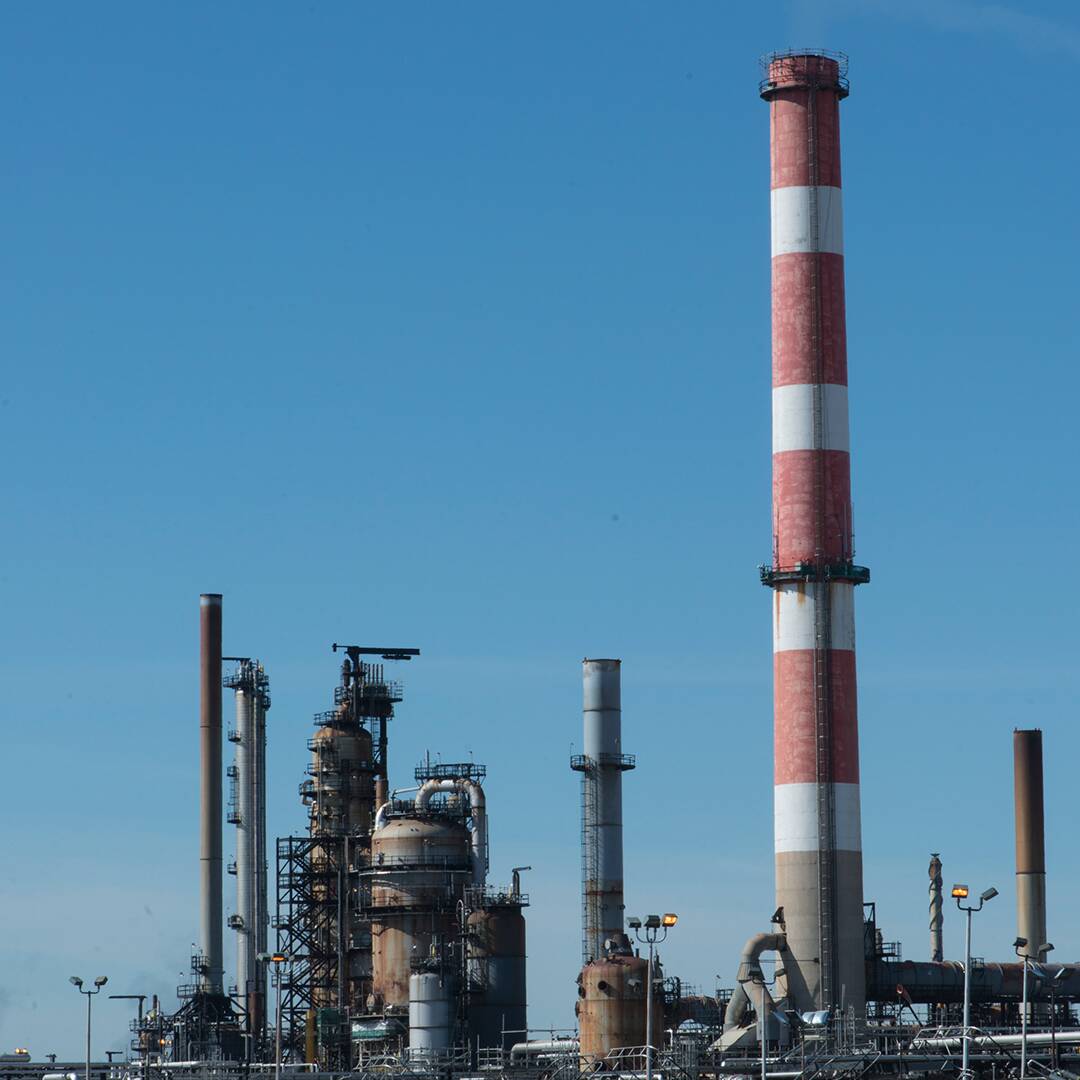selected item
The future of transportation fuels
February 11th, 2022
The vital task of reducing greenhouse gas emissions across the transportation sector requires a portfolio of solutions. Discover the lower-emission fuel alternatives ExxonMobil is working on to help power the future of transportation.
Reducing transportation greenhouse gas emissions is essential to managing the global energy transition – particularly as nearly a quarter of worldwide CO2 emissions from energy come from transportation.
ExxonMobil is exploring a mosaic of lower-emission fuel options, including second-generation, or advanced, biofuels and synthetic fuels created by using hydrogen and captured CO2 to form methanol.
Here’s a look at those efforts and the partnerships exploring these solutions.
What is the future of lower-emission fuels?
The ability to fuel transportation that produces fewer greenhouse gas emissions will depend on how lower-emission products are developed today. The adoption of electric vehicles continues to grow, but today that technology is largely used in passenger vehicles. ExxonMobil is working on a number of solutions to help advance new lower-emission fuels within the commercial and heavy-duty sector. Hear from ExxonMobil's chief fuels technology engineer, Krystal Wrigley, on the company's approach.
A portfolio of solutions
23 %
52.6 %
85% Reduction


Emissions
3M Metric tons
ExxonMobil's majority-owned affiliate, Imperial Oil, is moving ahead with plans to produce 20,000 barrels per day of renewable diesel with an anticipated start date of 2024, which could reduce emissions in Canada by about 3 million metric tons per year.
40% Reduction
Stena Bulk, a shipping company, conducted a successful commercial sea trial in 2020 of ExxonMobil's bio-based marine fuel, which has the potential to reduce greenhouse gas emissions by at least one-third, compared with conventional marine fuel oil.4


ExxonMobil has invested in Biojet AS, a Norwegian company that plans to convert wood waste into biofuels. The agreement enables ExxonMobil to purchase as many as 3 million barrels of product per year.
Designing the future of lower-emission transportation fuels is a challenge, but that's what makes it exciting. We are working to solve complex problems to help our world move more efficiently. It is really exciting to see where we can go.
Explore more
.jpg)
Globetrotting gearheads fueling F1
Key takeaways:
- Fiona McEwan and Pablo Terroba are ExxonMobil racing technical advisors with the Oracle RedBull F1 racing team.
- They monitor the ExxonMobil fuels and lubricants for wear issues, making their support key to performance.
Lower-emission transportation Article

Let's deliver reduced transportation emissions
Key takeaways:
- A diverse mix of technologies is vital to meeting the goals of the Paris Agreement.
- We need policy that encourages investments in all technologies to reduce emissions.
- Lower-emission fuels offer the potential for customers who cannot or do not want to purchase an EV to still play their part in reducing GHG emissions.
Lower-emission transportation Viewpoints

Let’s deliver sustainable aviation fuel – with our existing infrastructure in France
Three key takeaways:
- Global air travel demand is increasing.
- Sustainable aviation fuel (SAF) presents an opportunity to reduce emissions.
- Co-processing can help accelerate the energy transition.
Lower-emission transportation Article
.jpg)
Knock on wood: turning biomass into fuel
- The energy transition will require multiple solutions and collaborations.
- ExxonMobil and the National Renewable Energy lab are testing the conversion of wood waste to bio-oil.
- This oil has the potential to be upgraded into a biofuel for the vehicles we drive today.
Technology and collaborations Article
.jpg)
Strathcona: The road to renewable fuel
Renewable fuel production is ramping up at the Strathcona refinery. With hundreds of employees and contractors, and the capacity to fill 500,000 vehicles per day, this facility could deliver more than 6 million barrels of renewable diesel per year.Lower-emission transportation Perspective
%2b%2bx%2b%2bLandscape%2b169%2b(2880%2bx%2b1620).jpg)
The future of lower emission transportation fuels
For 30 years, Russ Green has worked primarily in ExxonMobil’s fuels and lubricants businesses. Today Russ is focused on developing lower-emission fuels for the highest emitting industries. Energy Factor recently spoke with Russ about the future of transportation and innovations he’s working on to help lower emissions.Lower-emission transportation Perspective
.jpg)
Renewable diesel for our changing world
Diesel plays a critical role in enabling modern life. This high-energy fuel packs the power needed for trucking, aviation and maritime transportation – which help move people around the world, and goods from manufacturing sites to our doorsteps.Lower-emission transportation Perspective
.jpg)
The ‘aha’ moment: Meha Shah
In any scientific endeavor, coming up with the idea is just the first step in the journey to a breakthrough. The finish line of innovation requires the curiosity, patience and resolve to keep working through unexpected setbacks and technical challenges.Lower-emission transportation Perspective
.jpg)
The ‘aha’ moment: Sheryl Rubin-Pitel and Ken Kar
In any scientific endeavor, coming up with the idea is just the first step in the journey to a breakthrough. The finish line of innovation requires the curiosity, patience and resolve to keep working through unexpected setbacks and technical challenges.Lower-emission transportation Perspective
.jpg)
The ‘aha’ moment: Krystal Wrigley
In any scientific endeavor, coming up with the idea is just the first step in the journey to a breakthrough. The finish line of innovation requires the curiosity, patience and resolve to keep working through unexpected setbacks and technical challenges.Lower-emission transportation Perspective
ExxonMobil expands interest in biofuels, acquires stake in Biojet AS
IRVING, Texas – ExxonMobil is expanding its interests in biofuels that can help reduce greenhouse gas emissions in the transportation sector, acquiring a 49.9% stake in Biojet AS, a Norwegian biofuels company that plans to convert forestry and wood-based construction waste into lower-emissions biofuels and biofuel components.News News releases
.jpg)
From farm leftovers to biofuel
Imagine turning agricultural leftovers into low-emission biofuel. That is, taking plant parts like inedible cornstalks and fueling our cars, trucks, boats and planes. ExxonMobil and its partners at Clariant and Genomatica are working together as part of an ambitious research program to do just that.Advanced biofuels Perspective
%2b2400%2bx%2b1350%2b2400%2bx%2b1350.jpg)
One-of-a-kind partners working on breakthrough innovations
No single company, organization or institution has all the answers when it comes to developing tomorrow’s low-emission energy. That’s why global energy company ExxonMobil is partnering with a range of organizations – including a leading biotechnology company to develop next-generation biofuels and a boutique technology company looking to vacuum carbon dioxide straight from the sky.Advanced biofuels Perspective
%2b2880%2bx%2b1619.jpg)
Transforming transportation
Continuing to reduce emissions today and into the future

Lower emissions at high altitude
New solutions from takeoff to touchdown
Heavy duty with a lighter CO2 footprint
Moving the world’s goods with fewer emissions
Hitting the road with fewer emissions
The innovations fueling today’s products and tomorrow’s solutions
High science on the high seas
Advancing new technologies for lower-emission fuels.jpg)
A new breed of racing, built on new technology
Fans rarely see the fluids inside a race car, but they are the hidden workhorses for race day success. Same for the engineers developing those fluids and lubes. And, activating the dynamic science behind race car performance requires the very same dedication and precision found on the racetrack itself.Automotive Perspective

.jpg)